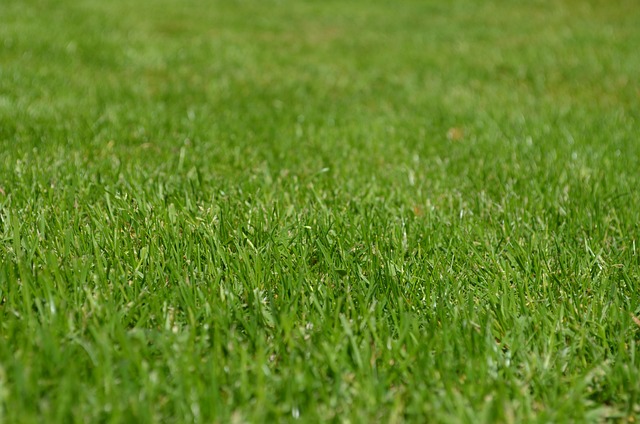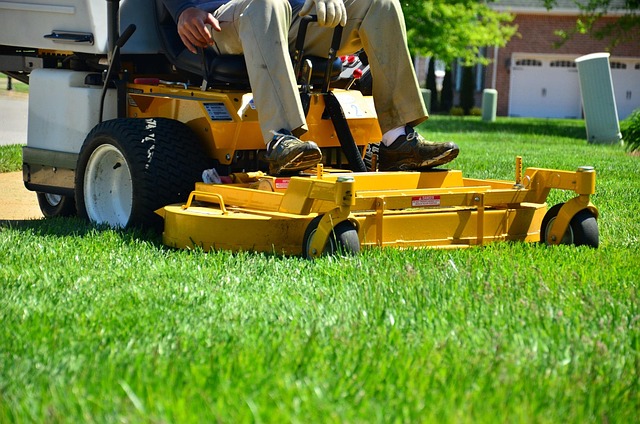Lawn Care and Landscaping professionals emphasize the importance of tree trimming and pruning for optimal tree health, visual appeal, and structural integrity. Timely services prevent damage, encourage air and sunlight penetration, deter pests, and enhance overall landscape management. Skilled technicians use precise tools to assess, thin, and shape trees, contributing to property values in both residential and commercial settings.
Tree trimming and pruning are essential practices for maintaining healthy and vibrant landscapes. This article explores the art of lawn care and landscaping through a focused lens on these critical services. We’ll delve into the benefits, best practices, and the professional’s role in ensuring your trees thrive. Learn practical tips for effective tree maintenance, enhancing both aesthetics and environmental health. Discover how regular trimming not only shapes your landscape but also contributes to the overall well-being of your property through professional lawn care techniques.
- Understanding Tree Trimming and Pruning: Benefits and Best Practices
- The Role of Professional Lawn Care and Landscaping in Tree Maintenance
- Tips for Effective Tree Trimming and Pruning: A Step-by-Step Guide
Understanding Tree Trimming and Pruning: Benefits and Best Practices

Tree trimming and pruning are essential practices in lawn care and landscaping, offering numerous benefits for both the trees and your outdoor space. These services involve selectively removing dead, diseased, or excess branches to promote healthy growth, enhance aesthetics, and improve overall tree structure. Regular trimming not only keeps trees robust and vibrant but also ensures they remain well-shaped, especially during their growth phases.
Best practices dictate that timing is crucial; pruning should be done at the right stages in a tree’s life cycle. For instance, late winter or early spring is often ideal for many deciduous trees as it triggers new growth. Landscapers use various tools, from hand pruners to chainsaws, depending on branch thickness, choosing techniques that preserve the tree’s natural form while encouraging air and sunlight penetration, vital elements for a thriving lawn and landscaping design.
The Role of Professional Lawn Care and Landscaping in Tree Maintenance

In the realm of tree maintenance, professional lawn care and landscaping services play a pivotal role in ensuring the health, safety, and aesthetic appeal of trees within residential and commercial spaces. These experts are equipped with the knowledge and tools to perform critical tasks like pruning and trimming, which not only shape the trees but also promote their long-term vitality. By employing skilled technicians, property owners can benefit from tailored solutions that address specific tree needs, resulting in a lush, well-maintained landscape.
Regular lawn care and landscaping practices go beyond aesthetics. Proper trimming and pruning help to remove dead or diseased branches, reducing the risk of structural damage caused by weak limbs. Additionally, these services facilitate better air and sunlight penetration, fostering healthier growth and preventing pest infestations. In today’s competitive market, where curb appeal is paramount, professional tree maintenance stands out as a game-changer for property values and overall landscape management, making it an indispensable aspect of comprehensive lawn care and landscaping.
Tips for Effective Tree Trimming and Pruning: A Step-by-Step Guide

Effective tree trimming and pruning are essential aspects of lawn care and landscaping, ensuring your trees remain healthy, vibrant, and aesthetically pleasing. To achieve this, consider a step-by-step guide that includes assessing tree health, identifying branches to trim, using the proper tools, and maintaining safety.
First, inspect the tree for any signs of disease, pests, or damage. Next, determine the desired shape and size of the tree, which will guide your pruning decisions. Only use clean, sharp tools to make precise cuts, ensuring they are suitable for the branch thickness. Start by removing dead or diseased branches, followed by thinning out dense foliage to improve air circulation and sunlight penetration. Finally, make selective cuts to shape the tree while maintaining its natural form.
Tree trimming and pruning are essential aspects of lawn care and landscaping, promoting healthy tree growth, enhancing aesthetics, and ensuring safety. By understanding the benefits and best practices outlined in this article, homeowners and professionals alike can effectively maintain trees, creating a vibrant and well-cared-for outdoor space. Investing in professional lawn care and landscaping services further guarantees optimal results, saving time and effort while allowing you to enjoy the beauty of well-tended trees.
